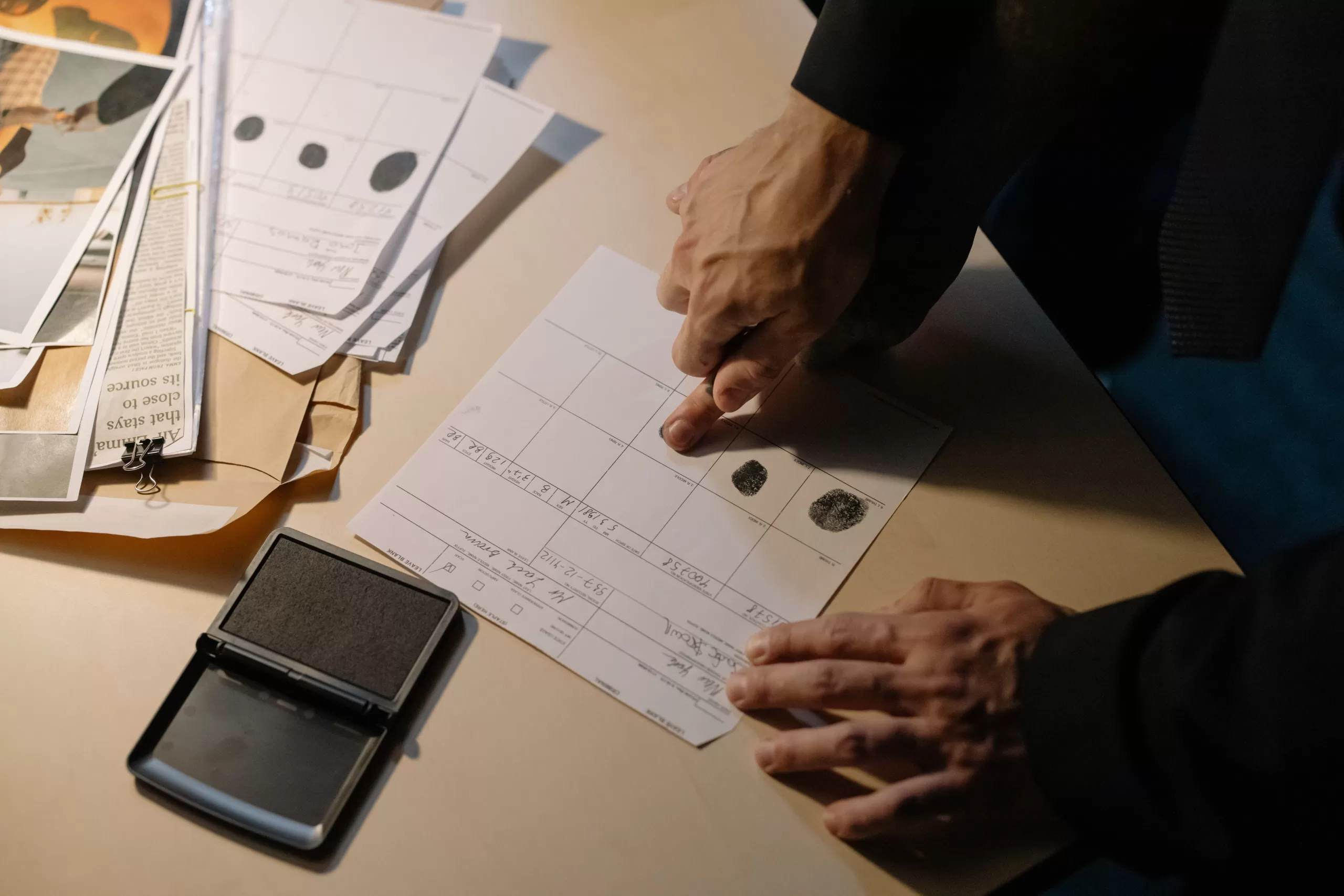The January 2024 honor killing of 19-year-old Aishwarya in Thanjavur, Tamil Nadu, is more than a singular tragedy; it is a case study at the brutal intersection of entrenched caste prejudice, patriarchal violence, and catastrophic systemic failure. This analysis deconstructs the murder of a young woman by her own family following her inter-caste marriage to Naveen, a Dalit man. The defining feature of this crime is not merely the act of murder but the calculated, multi-stage destruction of the primary forensic evidence—the victim’s body—through a staged suicide, illicit cremation, and subsequent disposal of her remains. This act of forensic sabotage, enabled by the documented negligence of local police who violated direct Supreme Court mandates, presents profound challenges to the justice system.
- The Crime Scene Without a Body: Forensic Investigation and its Sabotage
- Staging Suicide—Erasing the Cause of Death
- The Science of Ashes—What Cremated Remains Can and Cannot Tell Us
- The Final Act of Erasure—Disposing of the Remains
- Systemic Complicity: Police Negligence and the Violation of Supreme Court Mandates
- The Pivotal Failure: Inspector Murugaiyan’s “Gross Negligence”
- The Legal Shield That Was Ignored: Shakti Vahini v. Union of India (2018)
- The Sociology of Violence: Caste, Patriarchy, and Community
- The Path Forward: Legal Gaps and Recommendations
- Prosecuting Murder Without a Body
- The SC/ST Act and the Debate for a Special Law
- Recommendations for Systemic Reform
- Conclusion
This case study will offer a comprehensive examination of the case through three integrated perspectives: the forensic investigation and its deliberate subversion; the legal and systemic framework that failed to protect Aishwarya; and the potent sociological forces that motivated her murder.
The Anatomy of a Tragedy: A Case Chronology
The Marriage and the Flight for a New Life: Aishwarya, a 19-year-old from the Kallar community (a dominant intermediate caste), and Naveen, a 19-year-old from the Dalit community, had been in a relationship for 18 months after meeting in school. Aware that Aishwarya’s family would vehemently oppose their union, they married in a temple ceremony on December 31, 2023, and moved to a rented house in Veerapandi, seeking to build a life away from their native villages.
The Intervention that Sealed Her Fate: The family’s opposition was immediate. On January 2, 2024, Aishwarya’s parents, P. Perumal and Roja, filed a “missing person” complaint with the Palladam police—a common tactic used by families to separate adult couples in inter-caste relationships forcibly. Despite Aishwarya being a legal adult, Inspector C. Murugaiah of the Palladam police station acted on the complaint and, in a flagrant violation of her rights, handed her over to her parents. This decision stripped Aishwarya of her autonomy and placed her directly in the custody of those who posed a clear threat to her safety.
The Murder and the Cover-Up: Upon being forcibly returned to her village of Neivaviduthi, Aishwarya was reportedly assaulted by her father. In the early hours of January 3, 2024, she was killed. To conceal the homicide, her family allegedly hung her body from the ceiling to stage the scene as a suicide.
The Destruction of Evidence Evidence is any form of proof, such as objects, materials, or scientific findings, presented to establish or disprove a fact in a legal proceeding. It is used to reconstruct events and link or exclude individuals Read Full Definition: The cover-up then moved to its most critical phase: the complete destruction of forensic evidence. On January 3, without a post-mortem or death certificate, the family carried Aishwarya’s body a kilometer through the village to the cremation ground and burned it. According to the NGO ‘Evidence’, no one in the village questioned them, suggesting a chilling level of community complicity. In a final act of erasure, Perumal later returned to collect his daughter’s bones and ashes and discard them, ensuring no physical trace remained for analysis.
Evidence is any form of proof, such as objects, materials, or scientific findings, presented to establish or disprove a fact in a legal proceeding. It is used to reconstruct events and link or exclude individuals Read Full Definition: The cover-up then moved to its most critical phase: the complete destruction of forensic evidence. On January 3, without a post-mortem or death certificate, the family carried Aishwarya’s body a kilometer through the village to the cremation ground and burned it. According to the NGO ‘Evidence’, no one in the village questioned them, suggesting a chilling level of community complicity. In a final act of erasure, Perumal later returned to collect his daughter’s bones and ashes and discard them, ensuring no physical trace remained for analysis.
The Complaint and Arrests: After learning of Aishwarya’s death, Naveen filed a formal complaint on January 7, suspecting murder. Police subsequently arrested Perumal and Roja, charging them under Sections 302 (Murder) and 201 (Causing disappearance of evidence) of the Indian Penal Code. Three other relatives were also arrested for their alleged Alleged is a term used in legal contexts to describe an accusation or claim that has been made against an individual but has not yet been proven or confirmed. Read Full Definition involvement. For his role in the tragedy, Inspector Murugaiah was suspended for “gross negligence”.
Alleged is a term used in legal contexts to describe an accusation or claim that has been made against an individual but has not yet been proven or confirmed. Read Full Definition involvement. For his role in the tragedy, Inspector Murugaiah was suspended for “gross negligence”.
| Date | Event | Key Actors |
| Dec 31, 2023 | Aishwarya (Kallar caste) and Naveen (Dalit caste) marry at a temple. | Aishwarya, Naveen |
| Jan 2, 2024 | Aishwarya’s parents file a “missing person” report with Palladam police. | Perumal, Roja |
| Jan 2, 2024 | Inspector C. Murugaiah traces Aishwarya and hands her over to her parents. | Inspector C. Murugaiah, Perumal, Roja |
| Jan 2-3, 2024 | Aishwarya is physically assaulted and dies from her injuries. | Perumal, Roja, Relatives |
| Jan 3, 2024 | The family hangs Aishwarya’s body to stage a suicide, then cremates the body without an autopsyAn autopsy, also known as a post-mortem examination or necropsy (when performed on animals), is a thorough and systematic medical procedure that involves the examination of a deceased person's body, typically to determine or confirm Read Full Definition. Perumal later discards the remains. | Perumal, Family Members |
| Jan 7, 2024 | Naveen files a police report, suspecting murder. | Naveen, Vattathikkottai Police |
| Jan 10, 2024 | Police arrest Perumal and Roja, charging them with Murder and Destruction of Evidence. | Vattathikkottai Police, Perumal, Roja |
| Jan 10, 2024 | Inspector C. Murugaiah is suspended for “gross negligence.” | Tamil Nadu Police Department |
| Jan 12, 2024 | Three more relatives—K. Chinrasu, R. Thiruselvam, and T. Murugesan are arrested. | Vattathikkottai Police |
The Crime Scene Without a Body: Forensic Investigation and its Sabotage
The perpetrators’ actions were a deliberate strategy to defeat forensic science Discover the fascinating field of Forensic Science, the application of scientific principles to legal matters. This post delves into its many disciplines, from DNA analysis to crime scene investigation, its importance in the justice system, Read Full Definition. By destroying the primary evidence, they created immense challenges for the prosecution, showing a crude but effective “forensic awareness” of what it takes to cover up a crime
Discover the fascinating field of Forensic Science, the application of scientific principles to legal matters. This post delves into its many disciplines, from DNA analysis to crime scene investigation, its importance in the justice system, Read Full Definition. By destroying the primary evidence, they created immense challenges for the prosecution, showing a crude but effective “forensic awareness” of what it takes to cover up a crime
Staging Suicide—Erasing the Cause of Death
Hanging Aishwarya’s body after her death was a calculated attempt to create a false narrative of suicide. A forensic pathologist can typically spot the difference between ante-mortem (before death) hanging and post-mortem (after death) suspension by looking at ligature marks, internal neck structures like the hyoid bone, and cellular reactions. But cremation obliterates all soft tissue, cartilage, and even the delicate bones of the neck, making such a definitive diagnosis impossible. The perpetrators knew this and made sure the one piece of evidence that could definitively determine the cause of deathThe cause of death refers to the specific injury, disease, or underlying condition that directly leads to an individual's demise. It is a critical determination made by medical professionals, such as Medical Examiners or Coroners, Read Full Definition was gone forever.
The Science of Ashes—What Cremated Remains Can and Cannot Tell Us
The decision to cremate the body was the most effective method of evidence destruction. The analysis of burnt human remains is a specialized field of forensic anthropologyForensic anthropology is a special sub-field of physical anthropology (the study of human remains) that involves applying skeletal analysis and techniques in archaeology to solving criminal cases. Read Full Definition, as intense heat fundamentally changes a bone’s physical and chemical structure.
- DNA
 DNA, or Deoxyribonucleic Acid, is the genetic material found in cells, composed of a double helix structure. It serves as the genetic blueprint for all living organisms. Read Full Definition Degradation: High temperatures, often over 800°C in a funeral pyre, shatter and destroy DNA. This makes recovering a usable nuclear DNA profile highly improbable. However, mitochondrial DNA (mtDNA), which is more abundant and resilient, can sometimes be extracted from calcined bone fragments. Sequencing this mtDNA and comparing it to a maternal relative can scientifically confirm the victim’s identity, providing a crucial link for the prosecution when all other biological evidenceBiological evidence - physical evidence such as bodily fluids that originated from a human, plant or animal. Read Full Definition is gone.
DNA, or Deoxyribonucleic Acid, is the genetic material found in cells, composed of a double helix structure. It serves as the genetic blueprint for all living organisms. Read Full Definition Degradation: High temperatures, often over 800°C in a funeral pyre, shatter and destroy DNA. This makes recovering a usable nuclear DNA profile highly improbable. However, mitochondrial DNA (mtDNA), which is more abundant and resilient, can sometimes be extracted from calcined bone fragments. Sequencing this mtDNA and comparing it to a maternal relative can scientifically confirm the victim’s identity, providing a crucial link for the prosecution when all other biological evidenceBiological evidence - physical evidence such as bodily fluids that originated from a human, plant or animal. Read Full Definition is gone. - Identifying Trauma: Differentiating between a pre-existing injury and damage caused by the fire is a major challenge. The fire itself creates fractures that can obscure or be mistaken for injuries from an assault. While some studies show that evidence of trauma can survive burning, definitive interpretation is difficult without a complete skeleton.
- Commingling and Incomplete Recovery: A traditional funeral pyre guarantees that human remains are mixed with fuel ash. The violent fragmentation also ensures that smaller bones are lost, making a complete skeletal analysis impossible.
The Final Act of Erasure—Disposing of the Remains
Perumal’s final action—collecting and discarding the bone fragments and ashes—was a methodical last step to ensure that not even fragmented evidence could be recovered. This act of total erasure was meant to create an insurmountable legal hurdle: proving a murder without the corpus delicti![]() Corpus delicti, Latin for "body of the crime," is the legal principle that requires proof that a crime has actually occurred. Forensic science is often used to establish this by showing that a loss or Read Full Definition, or the body of the crime. This entire sequence demonstrates that the destruction of evidence was not an afterthought but an integral part of the ‘honor’ killing itself, reflecting the perpetrators’ belief in their entitlement and the chilling sanction of their community.
Corpus delicti, Latin for "body of the crime," is the legal principle that requires proof that a crime has actually occurred. Forensic science is often used to establish this by showing that a loss or Read Full Definition, or the body of the crime. This entire sequence demonstrates that the destruction of evidence was not an afterthought but an integral part of the ‘honor’ killing itself, reflecting the perpetrators’ belief in their entitlement and the chilling sanction of their community.
Systemic Complicity: Police Negligence and the Violation of Supreme Court Mandates
Aishwarya’s murder was not only predictable, but it was preventable. Her death is a direct result of a catastrophic failure by local law enforcement to do its most basic job. This failure was a flagrant violation of binding directives from the Supreme Court of India.
The Pivotal Failure: Inspector Murugaiyan’s “Gross Negligence”
The single most critical point of failure rests with Inspector C. Murugaiah. He was suspended for “gross negligence” and for handling the case in a “casual manner.” His decision to hand Aishwarya, an adult woman, back to the parents who wanted to separate her from her husband forcibly was an active choice that completely disregarded her legal standing and constitutional rights. This deference to patriarchal authority is a cornerstone of honor-based violence and placed Aishwarya in a situation of extreme danger.
The Legal Shield That Was Ignored: Shakti Vahini v. Union of India (2018)
In 2018, the Supreme Court’s landmark judgment in Shakti Vahini v. Union of India laid out a comprehensive and binding framework to prevent honor killings. The Court affirmed that the right of two consenting adults to marry is a fundamental right under the Constitution and that no family or community has the authority to interfere. The police actions in Aishwarya’s case violated several of these explicit directives, including the mandate to provide immediate security to threatened couples and move them to a “safe house” if necessary. The NGO ‘Evidence’ noted that the Tamil Nadu government has repeatedly “failed to follow the guidelines” issued by the Supreme Court.
| Supreme Court Directive (Shakti Vahini judgment) | Mandated Action | Police Action in Aishwarya’s Case |
| Uphold the right of consenting adults to marry. | Recognize the couple’s union as legal and protect their choice. | Privileged the parents’ complaint over an adult woman’s marital autonomy. |
| Provide immediate security to threatened couples. | Assess the threat and provide police protection. | No protection was provided; the victim was handed to the source of the threat. |
| Move the couple to a “safe house” if necessary. | Establish and utilize safe houses for protection. | No safe house was offered; the victim was returned to her parents’ village. |
| Ensure non-compliant officers face departmental action. | Initiate prompt proceedings against negligent officers. | Action (suspension) was taken only after the murder occurred. |
The Sociology of Violence: Caste, Patriarchy, and Community
To understand the motive behind this crime, you have to look at the powerful social structures that see an inter-caste marriage as a transgression worthy of death. The murder was a brutal display of deep-seated caste hierarchy and patriarchal control.
Caste Dynamics: Kallar vs. Dalit
This conflict is rooted in the volatileIn scientific and chemical contexts, the term "volatile" describes a substance that has the propensity to evaporate or change from a liquid state to a gaseous state readily at normal or room temperatures. Volatility is Read Full Definition intersection of two communities. Aishwarya belonged to the Kallar caste, part of the politically powerful Mukkulathor confederacy. Naveen is a Dalit from the Devendra Kula Vellalar community. The Mukkulathor community has historically seen itself as a martial, ruling class. The socioeconomic advancement of Dalits is often viewed as a direct challenge to this established social hierarchy, which can lead to violent conflict.
The Ideology of ‘Honor’
In this context, ‘honor’ (gowravam) is not a personal trait but a collective possession, representing the status and purity of the entire family and caste. This honor is intrinsically tied to a patriarchal system where controlling a woman’s body and her choices is paramount. A woman’s decision to marry a Dalit man is seen as polluting the bloodline and defiling the community’s purity. Violence then becomes a tool to restore this lost honor. It’s framed not as a crime but as a tragic necessity to get rid of a source of shame. The chilling silence of the villagers as Aishwarya’s body was carried to the cremation ground is a powerful testament to this communal sanction.
The Path Forward: Legal Gaps and Recommendations
The case exposes significant gaps in the legal and administrative systems. While prosecution is challenging, the case is a catalyst A catalyst is a substance that increases the speed of a chemical reaction without being consumed in the process. In forensics, it's the principle behind tests like the luminol reaction, where iron in blood catalyzes Read Full Definition for demanding systemic reform.
A catalyst is a substance that increases the speed of a chemical reaction without being consumed in the process. In forensics, it's the principle behind tests like the luminol reaction, where iron in blood catalyzes Read Full Definition for demanding systemic reform.
Prosecuting Murder Without a Body
The primary legal challenge is to prove murder beyond a reasonable doubt without the corpus delicti. Indian law permits this based on a strong, unbroken chain of circumstantial evidence. The prosecution’s strategy will likely rely on:
- Motive: The family’s clear opposition to the inter-caste marriage.
- Last Seen Theory: Aishwarya was last seen alive in the custody of her parents.
- Conduct of the Accused: The staging of a suicide and the hasty, illicit cremation and disposal of remains indicate a guilty mind.
- Witness Testimony: The testimony of Naveen and other witnesses is crucial. The NGO ‘Evidence’ recommended recording key statements before a magistrate to prevent witnesses from turning hostile under pressure.
The SC/ST Act and the Debate for a Special Law
The crime must be recognized as a caste-based atrocity.
- Application of the SC/ST (Prevention of Atrocities) Act: While Aishwarya was not Dalit, the crime was motivated by caste hatred towards her husband, Naveen. This brings the offense within the spirit of the SC/ST Act, which has been invoked in similar honor killing cases.
- The Call for a Special Law on Honor Crimes: This case has reignited the demand for a standalone law to combat honor-based violence. Activists argue that existing laws fail to address the unique motive of ‘honor,’ the role of community instigators, and the specific protection needs of couples.
Recommendations for Systemic Reform
To prevent future tragedies, a multi-pronged approach is imperative:
- Mandatory Enforcement of Shakti Vahini Guidelines: These directives must be treated as legally enforceable protocols, with severe and automatic penalties for non-compliance by police.
- Specialized Police Training: Mandatory training for all police on handling honor-based violence, focusing on the constitutional rights of adults and the illegality of deferring to family pressure.
- Mandatory Forensic Protocols: In any suspected honor crime, a medico-legal autopsy should be mandatory before cremation or burial is permitted.
- Strengthening Witness Protection: A robust, well-funded witness protection program is essential to counter the immense community pressure in these cases.
Conclusion
The murder of Aishwarya is a profound indictmentAn indictment is an official accusation stating that a person is being charged with a crime and that a criminal trial will be held. Read Full Definition of a society and a system that failed her at every turn. Forensically, her case is a study in the calculated destruction of truth, where the perpetrators’ primary weapon, after the one that took her life, was fire. Legally, it demonstrates the catastrophic gap between the progressive mandates of the Supreme Court and the regressive, caste-biased realities of local law enforcement. Sociologically, it is a brutal manifestation of caste-based patriarchy, where a young woman’s life was deemed less valuable than the ‘honor’ of her family and caste. Prosecuting this case will test the legal system’s ability to deliver justice in the absence of a body. However, true justice requires more than a conviction; it demands deep, systemic reform. Until the state bridges the chasm between its constitutional ideals and the grim reality faced by those who dare to love across the forbidden lines of caste, the embers of Aishwarya’s funeral pyre will continue to cast a long, dark shadow.
Key Points
- The tragic intersection of caste, patriarchy, and systemic failure: The murder of Aishwarya exemplifies how entrenched caste prejudice and patriarchal violence, combined with systemic negligence, culminate in a brutal honor killing that challenges justice.
- Sequence of events leading to Aishwarya’s death: Aishwarya and Naveen married secretly, but police and family interference, including wrongful custody and assault, resulted in her murder, hiding evidence through staged suicide and cremation.
- Forensic sabotage and evidence destruction: Perpetrators deliberately destroyed forensic evidence by staging a suicide, cremating the body, and discarding remains, deliberately impairing the chances of establishing the cause of death and identity.
- Police negligence and violations of legal protocols: Critical lapses by police, especially Inspector Murugaiyan’s gross negligence and disregard for Supreme Court directives, facilitated the crime by failing to protect the accused couple.
- Sociological roots of honor-based violence and legal reforms needed: Deep-seated caste hierarchies, patriarchal notions of honor, and community complicity underpin the violence, highlighting the urgent need for legal reforms and stricter enforcement of existing safeguards.











